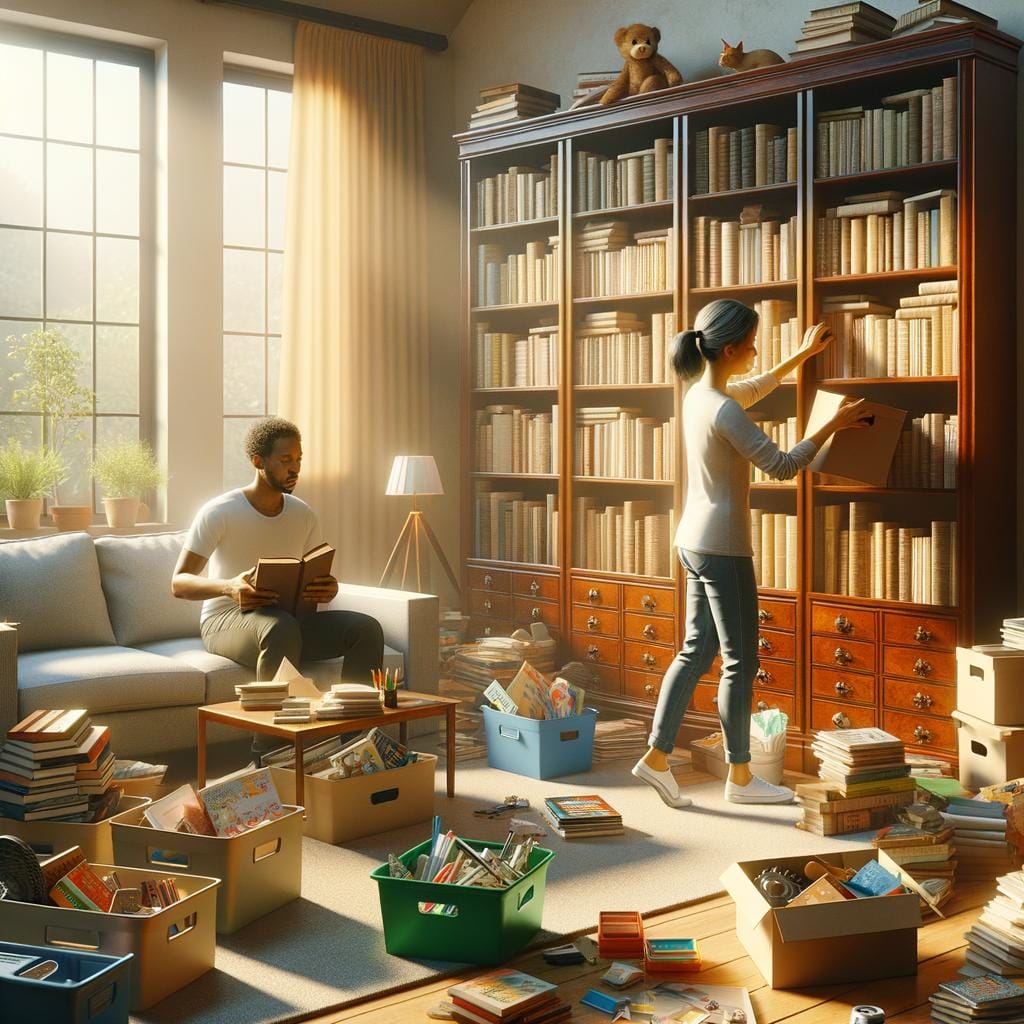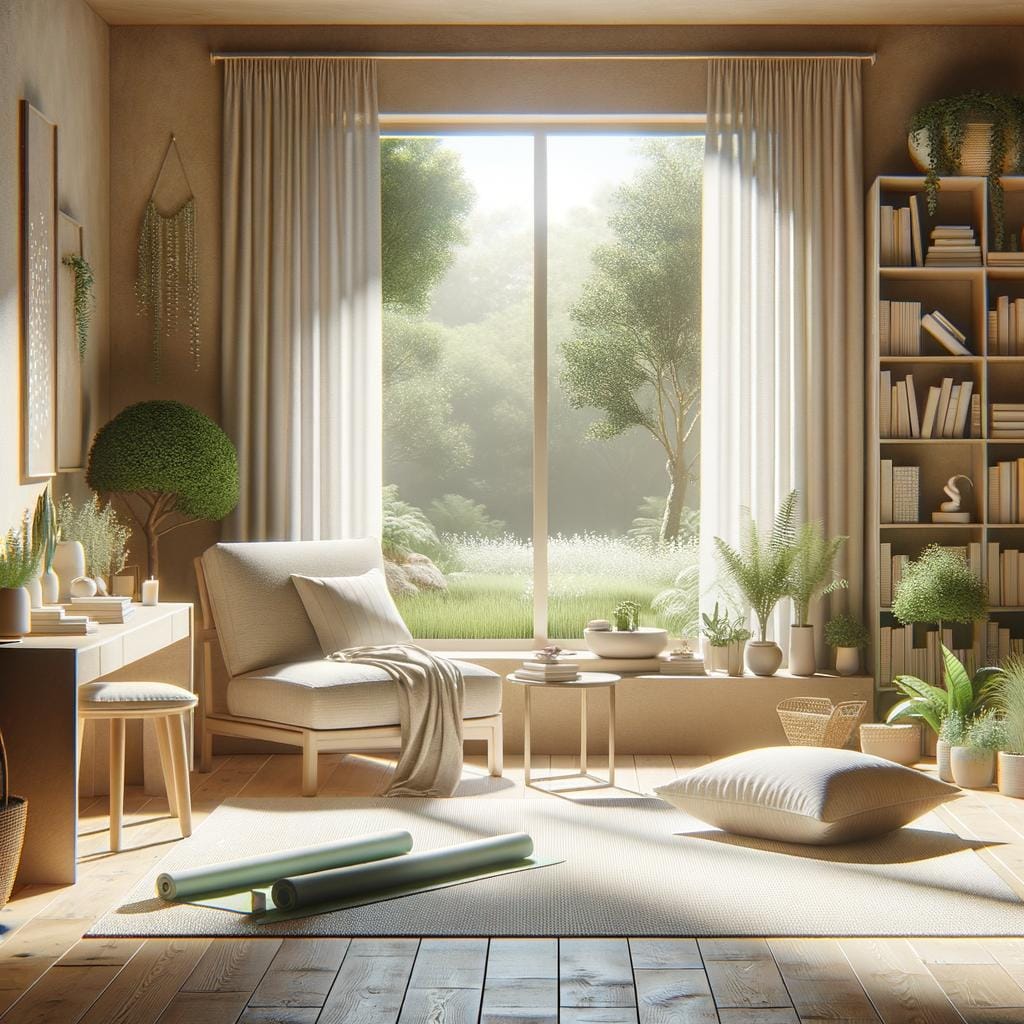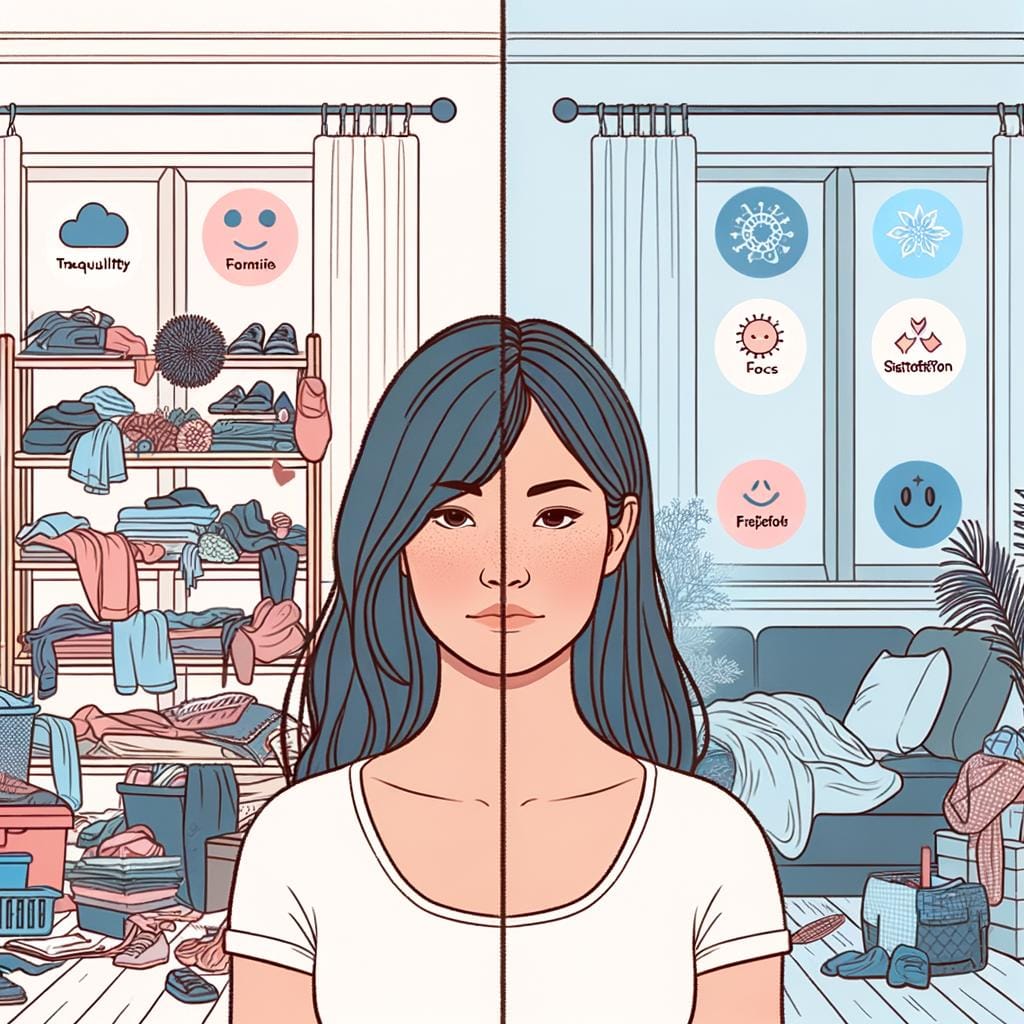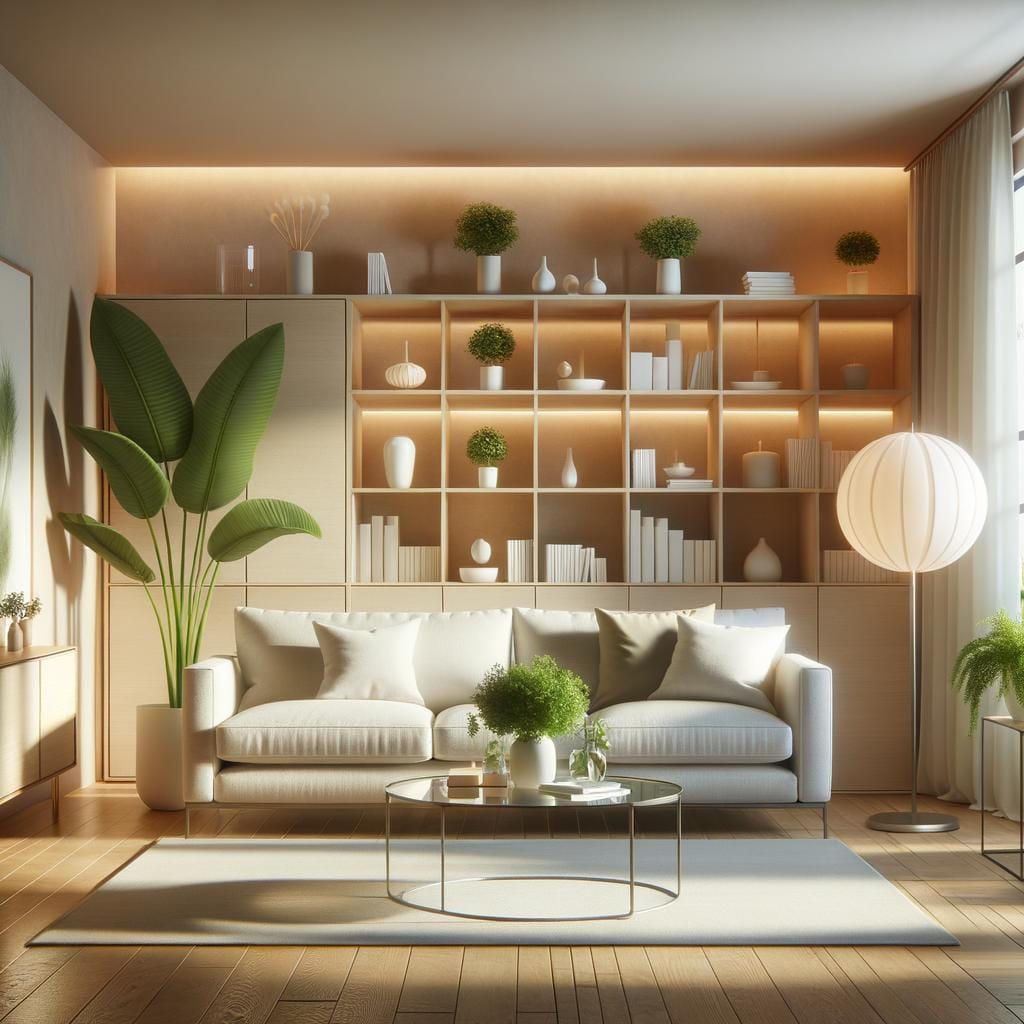A cluttered living room can often feel overwhelming and chaotic, affecting not only the aesthetics of the space but also our mental well-being. In today’s fast-paced world, finding time to declutter and organize our living spaces can seem like a daunting task. However, the benefits of living room decluttering go far beyond just aesthetic appeal.
Creating a clutter-free living space can lead to improved focus, reduced stress levels, and increased productivity. By eliminating excess items and organizing our belongings, we can create a serene environment that promotes relaxation and peace of mind. Furthermore, a decluttered living room allows us to fully enjoy and make use of the space we have without feeling overwhelmed by unnecessary items.
In this article, we will explore the importance of living room decluttering, the various benefits of maintaining a clutter-free space, as well as provide you with practical tips and creative storage solutions to help you achieve a tidy and organized living room. Let’s dive into the world of decluttering and discover how it can positively impact both our physical environment and mental well-being.
Benefits of a Clutter-Free Living Space
A clutter-free living space offers a multitude of benefits beyond just aesthetic appeal. One of the key advantages of decluttering your living room is the mental clarity it provides. A tidy environment can help reduce feelings of overwhelm and anxiety, allowing you to focus better and feel more relaxed in your home. Studies have shown that a clean and organized living space can contribute to improved mental well-being and overall happiness.
Improved Productivity
In addition to boosting mental health, a clutter-free living room can also enhance productivity. When your space is free from unnecessary items and distractions, you are able to think more clearly and efficiently tackle tasks. Whether you work from home or simply want a peaceful place to unwind after a long day, maintaining an organized living room can make a significant difference in your ability to concentrate and get things done.
Better Air Quality
Another often overlooked benefit of decluttering your living room is the improvement in air quality it can bring. Clutter tends to accumulate dust, dirt, and allergens, which can negatively impact indoor air quality. By keeping surfaces clear and regularly cleaning your living space, you can create a healthier environment for yourself and your family. This can lead to fewer allergy symptoms, better respiratory health, and an overall sense of well-being.
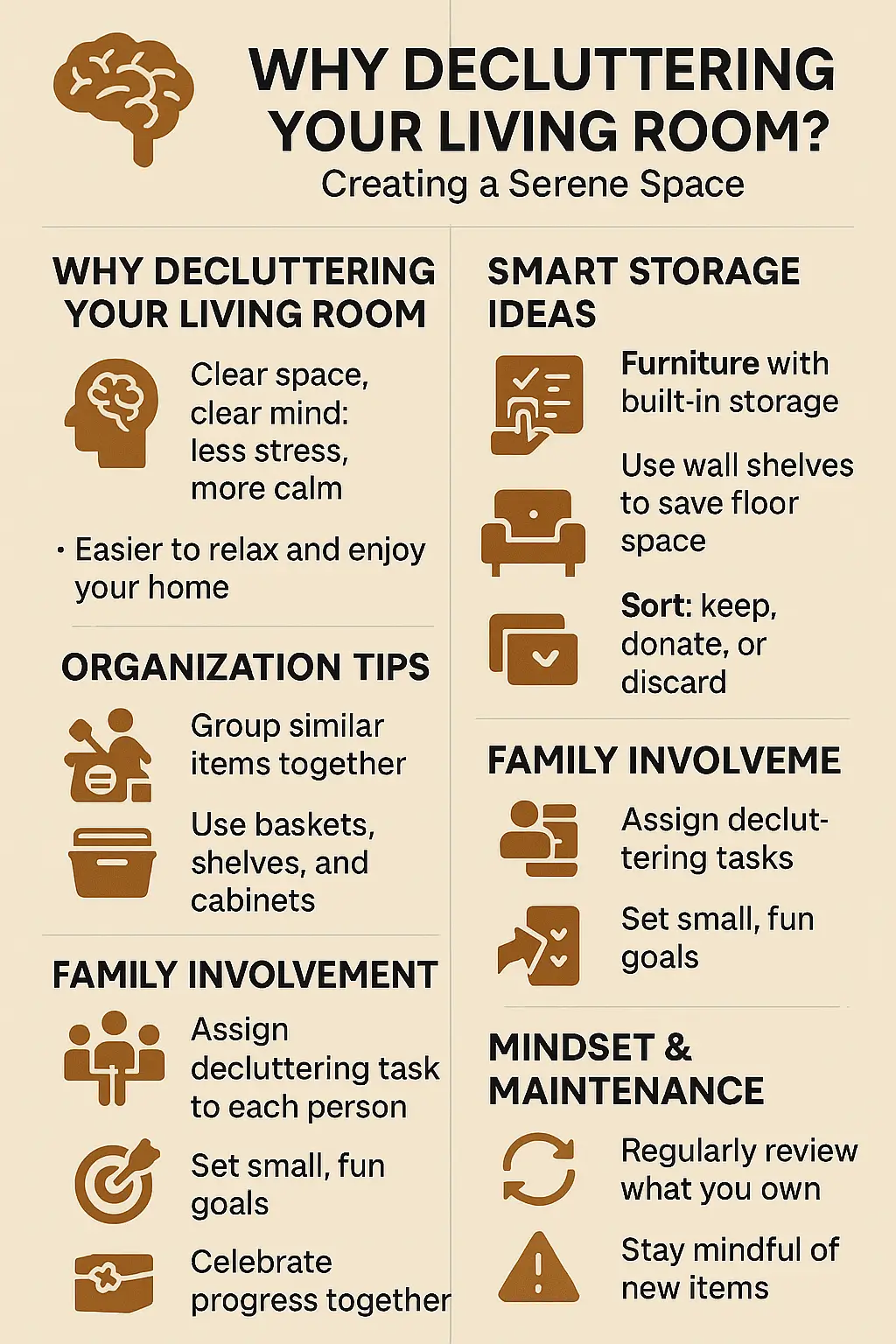
Step-by-Step Guide to Decluttering Your Living Room
Assess the Situation
Before diving into the process of decluttering your living room, take a moment to assess the situation. Walk around the room and make note of areas that accumulate clutter more frequently. Identify items that don’t belong or serve a purpose in the space. This initial step will give you a clearer picture of where you need to focus your decluttering efforts.
Start Small
Decluttering can often feel overwhelming, especially if your living room has accumulated years worth of belongings. To make the process more manageable, start small by tackling one area at a time. You can begin with clearing off a coffee table or organizing a bookshelf. Breaking down the task into smaller chunks will help you stay motivated and prevent burnout.
Declutter With Purpose
As you go through each item in your living room, ask yourself if it serves a purpose or brings you joy. If not, consider donating, selling, or discarding it. Be ruthless in your decision-making process to truly create a clutter-free space. Remember that decluttering is not just about tidying up physically but also about creating a peaceful and harmonious environment for yourself and your family.
Practical Tips for Organizing Living Room Items
Organizing your living room can make a significant difference in the overall look and feel of your space. One practical tip for organizing living room items is to designate specific areas or storage solutions for different categories of items. For example, create a designated spot for remote controls, magazines, and blankets to prevent clutter from accumulating on surfaces like coffee tables or sofas. Utilizing baskets, bins, or decorative boxes can help keep these items neatly stored yet easily accessible.
Another useful tip is to declutter regularly and only keep items that serve a purpose or bring you joy. This means periodically going through your belongings in the living room and getting rid of things that are no longer needed or used. Consider implementing a “one in, one out” rule to prevent unnecessary accumulation of items. By reducing excess belongings, you can create a more streamlined and organized living space that feels spacious and inviting.
Additionally, consider maximizing vertical storage options in your living room to optimize space. Wall-mounted shelves, bookcases, or multi-functional furniture pieces such as ottomans with built-in storage compartments can help minimize clutter on the floor and surfaces. By utilizing vertical space effectively, you can create a visually appealing and functional living room that promotes relaxation and comfort.
| Living Room Decluttering | Practical Tips for Organizing Living Room Items |
|---|---|
| Organize items into designated areas | Create specific spots for different categories of items |
| Declutter regularly | Get rid of unnecessary items to maintain organization |
| Maximize vertical storage options | Utilize wall-mounted shelves and multifunctional furniture pieces |
Creative Storage Solutions for a Tidy Living Room
In order to maintain a tidy living room and keep clutter at bay, creative storage solutions are crucial. Not only do these solutions help maximize space, but they also add a touch of style to your home decor. Here are some innovative ways to store items in your living room:
- Utilize multi-functional furniture: Invest in coffee tables, ottomans, or benches with built-in storage compartments. These pieces not only provide extra seating or surface area but also offer hidden storage space for blankets, throws, books, or board games.
- Wall-mounted shelves and cabinets: Make use of vertical space by installing wall shelves or cabinets to display decorative items while storing smaller items out of sight. Floating shelves can also create a sleek and modern look in your living room.
- Baskets and bins: Decorative baskets and bins are not only practical for storing miscellaneous items such as remote controls, magazines, or toys but also add texture and warmth to the room. Place them under coffee tables or on bookshelves for easy access.
Moreover, incorporating storage solutions that blend seamlessly with your existing decor can enhance the overall aesthetic of your living room while keeping it organized. By implementing these creative ideas, you can effectively declutter your space without sacrificing style.
- Pegboards: Install a pegboard on an empty wall to hang and organize frequently used items like keys, hats, or small plants. This practical solution keeps essentials within reach while adding an element of visual interest to the room.
- Hidden storage compartments: Consider furniture pieces with hidden compartments such as lift-top coffee tables or sofas with storage under the seat cushions. These discreet options allow you to keep clutter out of sight while maintaining a clean and tidy living room.
- Repurpose old furniture: Get creative by repurposing old crates, suitcases, or trunks as unique storage solutions in your living room. These upcycled pieces can serve as stylish alternatives for storing books, blankets, or other belongings while adding character to the space.
By implementing these creative storage solutions in your living room decluttering process, you can create a harmonious balance between functionality and design. With the right organizational tools in place, you can enjoy a clutter-free environment that reflects your personal style and promotes relaxation in your home.
How to Make Decluttering a Fun Family Activity
Decluttering your living room doesn’t have to be a tedious chore that you tackle on your own. In fact, it can be a fun and engaging activity for the whole family to participate in. By involving everyone in the process, you not only lighten the workload but also create a sense of teamwork and accomplishment. Consider turning on some upbeat music, setting a timer for short bursts of decluttering, and rewarding yourselves with a treat after each session.
To make decluttering a fun family activity, consider turning it into a game or competition. You can challenge each family member to see who can declutter the most items in a certain amount of time or who can find the most creative storage solution for their belongings. By adding an element of friendly competition, you can make the task more engaging and enjoyable for everyone involved.
Another way to make decluttering more enjoyable is to reminisce about old memories associated with the items you come across. Take breaks during the decluttering process to share stories or anecdotes related to certain possessions. This not only makes the task more lighthearted but also helps in creating bonding moments with your family members. By incorporating fun activities and positive reinforcement, you can transform living room decluttering from a dreaded task into a memorable experience for the whole family.
The Psychology Behind Clutter and Its Impact on Mental Health
One of the key reasons why clutter negatively affects mental health is that it can contribute to a sense of chaos and lack of control. When our living room is filled with items that are disorganized or unnecessary, it can create a subconscious feeling of unease.
This constant visual reminder of disorder can trigger feelings of guilt or shame, further impacting our mood and mindset. By decluttering our living rooms, we regain a sense of order and control over our environment, which can have a profound effect on our mental well-being.
In addition to the emotional toll clutter takes on our mental health, it can also impede productivity and focus. A study conducted by researchers at Princeton University found that physical clutter competes for our attention, making it more difficult to concentrate on tasks at hand.
This constant distraction can increase stress levels and reduce cognitive performance. Decluttering your living room not only creates a more visually appealing space but also enhances your ability to think clearly and stay focused on important priorities in your life.
| Impact of Clutter | Effect on Mental Health |
|---|---|
| Increased stress levels | Can lead to higher levels of anxiety and fatigue |
| Loss of control | Contributes to feelings of overwhelm |
| Reduced productivity | Impedes focus and cognitive performance |
Before and After Decluttering
Decluttering your living room can make a significant difference not only in the physical space but also in your mental well-being. Here are some inspiring transformation stories from individuals who have embarked on the journey of living room decluttering:
- Sarah, a busy working mother, found herself feeling overwhelmed by the constant mess in her living room. She decided to dedicate a weekend to declutter and organize the space. After donating unused items, investing in some storage bins, and creating designated areas for different purposes, she now enjoys a cozy and clutter-free living room where she can relax with her family.
- John, a young professional living in a small apartment, realized that his cluttered living room was affecting his productivity and mood. He started by sorting through his belongings, getting rid of duplicates and unnecessary items. By implementing simple shelving units and utilizing vertical space for storage, John was able to create a functional and visually appealing living area that feels more spacious and organized.
- Maria and David, a couple who loves hosting gatherings with friends and family, struggled with their cluttered living room that never seemed presentable to guests. They decided to tackle the task together by decluttering one area at a time, setting regular maintenance routines, and incorporating multifunctional furniture pieces for additional storage. Now their living room is not only inviting but also serves as a perfect entertainment space for social gatherings.
These transformation stories highlight the positive impact of taking the time to declutter your living room. Whether you’re looking to create a peaceful retreat for relaxation or an inviting space for socializing, decluttering can lead to a more enjoyable and functional living environment. Remember that with dedication and creativity, anyone can achieve a clutter-free living space that reflects their personal style and enhances their overall well-being.
Maintaining a Decluttered Living Room
Another tip for long-term success in maintaining a decluttered living room is to regularly assess your belongings and eliminate items that no longer serve a purpose or bring value to your space. Periodically go through your belongings and donate or discard items that are no longer needed or loved. This will prevent unnecessary clutter from building up over time and help you maintain a streamlined living room environment.
Additionally, establishing daily or weekly cleaning routines can also help you stay on top of keeping your living room tidy and organized. Set aside time each day or week to dust surfaces, vacuum floors, and straighten up any items that may have been misplaced.
By incorporating these small tasks into your regular schedule, you can prevent clutter from accumulating and maintain a clean and inviting living room space. By implementing these tips for long-term success in maintaining a decluttered living room, you can continue to enjoy the benefits of an organized and peaceful home environment.
Conclusion
In conclusion, living room decluttering is not just about getting rid of excess items; it’s about creating a peaceful and organized space where you can truly relax and unwind. By following the step-by-step guide and practical tips provided in this article, you can transform your living room into a clutter-free oasis that promotes positivity and well-being.
Embracing a simplified living space has countless benefits, from reducing stress levels to improving productivity and overall quality of life. By implementing creative storage solutions and making decluttering a fun family activity, you not only maintain a tidy living room but also foster a sense of teamwork and accomplishment among your loved ones.
Remember, decluttering is an ongoing process that requires consistent effort and commitment. By understanding the psychology behind clutter and its impact on mental health, you can stay motivated to keep your living room organized for the long term. So take the first step towards a more peaceful home environment by starting your living room decluttering journey today.
Frequently Asked Questions
How Do You Declutter a Living Room?
Decluttering a living room can be accomplished by first assessing what items are essential and what items are not. Start by removing any unnecessary items, organizing furniture in a functional layout, and getting rid of items that no longer serve a purpose.
What Is the 20 20 20 Rule for Decluttering?
The 20-20-20 rule for decluttering involves taking 20 minutes each day to focus on decluttering specific areas of your home. This rule helps break down the decluttering process into manageable chunks, preventing overwhelm and making it easier to maintain a tidy living space.
What Is the 12 12 12 Rule for Decluttering?
The 12-12-12 rule for decluttering suggests selecting 12 items to throw away, 12 items to donate, and 12 items to return to their proper places each day. This rule helps create a habit of consistently decluttering and organizing spaces in your home.

Hello, I’m April Denton, your go-to expert for all things home decluttering and organization. With over a decade of experience helping individuals transform their living spaces into serene, clutter-free sanctuaries, I am passionate about the life-changing benefits of decluttering. My journey into the world of organization began out of necessity, juggling a busy career and a bustling household. I quickly realized that a well-organized home was the key to a more balanced, stress-free life.

